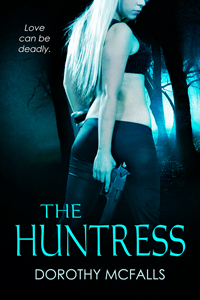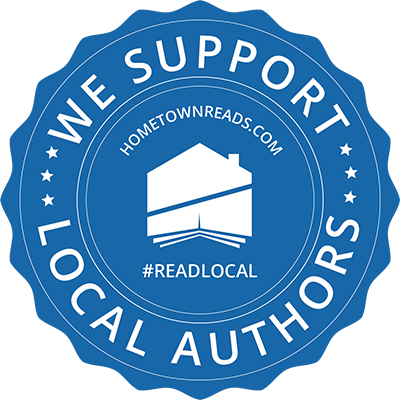We’re so excited to have Dorothy McFalls as our guest today! 🙂 Dorothy, thank you, for sharing these wonderful tips on writing a great synopsis with us.

Dorothy St. James is the author of the White House Gardener Mystery series for Berkley Prime Crime. The Scarlet Pepper, the second book in the series, was released in April 2012. Dorothy also writes romance as Dorothy McFalls. The Huntress, an independently-published kick-ass romantic suspense, recently climbed the Amazon bestseller list, hitting #4 in romantic suspense. You can find Dorothy at www.DorothyStJames.com or www.DorothyMcFalls.com or on Facebook (www.facebook.com/dorothystjames) or on Twitter (@DorothyStJames). Other books by Dorothy McFalls include The Nude, The Marriage List, A Wizard For Christmas, and Neptune’s Lair. Visit Dorothy’s website to see a complete list of her novels.
A couple of weeks ago I was invited to attend an impromptu writing retreat with three other amazing authors. One of those authors also happens to be an acquiring editor. As we were talking, she mentioned how surprised she was at the poor quality of many of the synopses she receives with the submissions. She couldn’t understand why authors didn’t spend more time on writing a synopsis when it is one of the major elements editorial staffs look at when deciding whether to buy a project or not.
I have to admit that I used to struggle with writing a synopsis. The end result was often dull. Flat. And it, quite frankly, bored me to death. That was before I learned what I was doing wrong.
Your synopsis is not a summary of your book. Yes, the synopsis should contain a beginning, middle, and end. But don’t simply state what happened in your story. Don’t write an outline. First, that’s boring. Second, it doesn’t demonstrate to the editor how incredibly talented you are.
Your synopsis is an advertising tool to sell your book. This is especially true if you are hoping to sell on proposal (in other words—convince a publisher to pay you money for a book you haven’t yet written.)
Not only should the synopsis tell the editor about your book, you also want it to:
- showcase your unique voice,
- represent the genre you are writing, and
- make the editor excited about the story (so she buys it!)
The synopsis should match the tone of your book. If you’re writing a comedy, make the synopsis funny. If it’s a thriller, write it so the editor is on the edge of her seat when she’s reading the synopsis. If it’s a sexy romance, make the synopsis sexy. Let the editor know when the hero and heroine kiss and more. (I was forever leaving out the first kiss and deepening relationship details in my synopses for my romance novels. And, consequently, I didn’t sell a book until a writer friend insisted I add that to my synopsis. Remember: the synopsis is a tool for selling your book.)
Most novels are written using a three-act structure (whether the author knows she’s doing it or not.) So why not use the three-act structure to write your synopsis?
Act 1: The Beginning:
Just like in your book, start with an interesting hook. For my latest cozy mystery release, The Scarlet Pepper (a book that sold based on its synopsis), I opened the synopsis with:
Someone is tampering with the Presidential vegetable garden, and Casey Calhoun, organic gardener for the White House, is determined to track down the garden prankster. Red peppers are growing instead of the green ones that had been planted. There’s cabbage where the First Lady’s favorite variety of lettuce should be. And all the tomato plants are gone.
From this opening paragraph you know (1) who the main character is, (2) there’s a mystery to be solved, and (3) that the story will be light-hearted in tone.
Because your synopsis isn’t a summary or outline of the book, it doesn’t have to open where the book opens. Open the synopsis by introducing your main characters and the story problem.
Act 2: The Middle:
What are the major turning points in your story? What problems does your hapless hero face as he tries to win the heroine’s heart? How do matters get progressively worse as your amateur sleuth works to solve the murder? All of these things happen in the middle of your story. In your synopsis, you want to describe the obstacles your main character faces…and how things get worse.
If necessary, the middle is also where you would introduce subplots. For example, if you’re writing a mystery and there’s a romance subplot, you would want to introduce the subplot in this part of the synopsis. But I caution you to be extremely selective with subplots. You want a lean, fast-reading synopsis that catches the editor’s attention. Many subplots, while interesting in the book, will slow the action in your synopsis. When in doubt, leave it out.
Act 3: The End:
Don’t leave this part out! The editor wants to know you’ve written a complete story. She needs to know if the story fulfills its promise to the reader. She can’t know you’ve done your job if you don’t tell her how your book will end.
If you’re writing a romance, tell how the hero and heroine find their happily ever after. If you’re writing a mystery, tell how the mystery will be solved and the bad guys get caught. If you’re writing an emotional women’s fiction novel, show the conclusion of the main character’s emotional arc.
If you include subplots within your synopsis, be sure they are wrapped up at the ending as well.
Final Thoughts:
- Don’t forget to show/tell how the main character grows and changes over the course of the story.
- Leave out minor characters and most sub-plots. Give the editor what she needs to know and nothing else.
- Keep it short. Most editors want 3 to 5 page synopses. That said, every publisher is different. Check the publisher website to see if they’ve posted guidelines for what they want in the synopsis.
- Always write the synopsis in present tense.
- For guidance in developing a tight plot, I highly recommend Blake Snyder’s screenwriting book Save the Cat and his Beat Sheet (http://www.blakesnyder.com/tools/)
Now, go write that synopsis and sell that book!
And writers, if you still need help after you’ve followed these tips, Written Dreams offers editing services for writing synopses and query letters. See our Services Page on our website for details. https://writtendreams.com/Services.html We’re happy to help in any way we can. 🙂
Thank you, Dorothy, for the terrific advice! She will be with us all day so feel free to ask Dorothy questions or make a comment on the post. Thank you! 🙂





Hello. Great blog! For the life of me, I can’t seem to write a synopsis on my Middle Grade fantasy without summarizing it and making it boring. There are so many details, I don’t know what to leave out and still make it cohesive. I don’t know how to get the main points across and still make it sound like fantasy. Help!!
Thanks,
Joanie
Thanks for your question, Joanie! Can you give a few more details about the plot for Dorothy?
Hi Joanie, Thank you for stopping by!
I agree with you. It’s often really hard to decide what details to leave out when we’re taught that everything in a story has to have an important purpose. (And teasing out the important details for a synopsis can feel impossible when the book is already written. I do know that!) But what is vital to your novel is not necessarily vital to your synopsis. Your synopsis is not your novel. It’s a selling tool.
What it is about your novel that makes it special? What about your novel makes it fit the genre (middle grade fantasy) that you’re writing in? Focus on those elements and only those elements. Leave everything else out. Even if it seems extremely important to your novel, leave it out of your synopsis. If you win the editor over with your opening chapters and your synopsis, she’ll read the wonderful elements in your novel.
Fantasies are often coming of age stories or stories about discovering your own powers. Figure out what kind of fantasy you have and try and focus on that theme for your synopsis. Include specifics about your main character’s growth through the story, what special powers that she (or he) encounters along the way, what obstacles she (or he) faces, and include a few side characters and how they help or hinder the main character.
What I’ve found helpful when writing a synopsis after the novel is written is to make a list of the most important turning points (conflicts the character overcomes/doesn’t overcome to learn the important life lesson). Then I put the novel away and write the synopsis as if it were a completely different tale using only the major turning points I have written on the paper.
Let the other gems you have in your novel surprise and delight your editor as she’s reading the manuscript.
I very much appreciate this blog. I did not know that subplots can be omitted in a synopsis and also did not know that a synopsis should be written in present tense. I write the first draft of a synopsis about 3/4 of the way through my novel just to make sure I’m on track and that a synopsis actually can be written about the novel.
If you don’t plot in advance, writing the synopsis when you’re 3/4th through is a great idea! Thanks for offering it, Peggy! I’m a die-hard plotter. I think I’d get hives if I didn’t have pages of plot work done before I started to write. But I’m just weird that way. 🙂
About subplots, I find that it’s best just to include the subplots that are absolutely necessary to show that you are meeting the genre requirements. For example, many cozy mysteries have a romance subplot, so I pepper (very briefly) the romance element throughout the synopsis.
Great tips, Dorothy, am off to purchase Snyder’s book and get busy writing a killer synopsis. 🙂
I love his book! I think you will, too. When Blake was still alive, I was very lucky to take an intensive class on plotting and using the beat sheet from him. Changed how I wrote forever by letting me see what the meat of my stories and how best to distill the story into a catchy log line.
Excellent article, and great tips, Dorothy!
Thank you so much for stopping by, Lee!
Great article and tips, Dorothy!
Great summary of how to do this dreaded task, Dorothy!
Thanks, Marni! And thank you for stopping by!
I had been intimidated by feared synopsis. Now, I think I can face this monster and come out ok. I was at a critique group the other night and one author had a synopsis. I had no idea what I was critiquing, and after reading this article, I know where she had gone wrong. It’s a learning experience for me.
I think knowing that the synopsis is not a summary, as I erroneously believed, gives me more confidence in tackling this. I have numerous subplots in my first manuscript, I was unsure how to include them. Now I know I don’t have to, rather shouldn’t. {whew!} what a relief.
Thanks for your insight, expertise and experience to help us newbies in the field!
Lisa
I’m glad this was helpful. It can be difficult to decide what to keep and what to leave out when writing a synopsis. I find it’s helpful to think about the genre. Include plots and sub-plots that best show that your book fits the genre that you’re writing. Leave everything else out. In fact, I left out some important details about what makes my heroine tick. I loved those details. Readers have found them interesting. But if I’d put it in the synopsis, it might have raised too many questions in the editor’s mind and had her wondering how this minor subplot fits into the mystery genre.
I would be interested to hear your comments on our blog?
Thanks Dorothy for some great tips and advice. And thank you Brittany for bringing us this nice chat via blog post. Always something to learn.
You’re very welcome, Lily. I’m glad Dorothy’s tips were helpful to you. 🙂
Thanks, Lily! Anytime! I’m glad you found it helpful!
I absolutely dread writing synopses. I think one of the best aspects of indie publishing for me is that I don’t have to write the synopsis until I finish the book, and then, it’s more of a blurb to market the book, not sell it to an agent or editor. I’m in awe of anyone who can write it first–I don’t know what I’d have done if I’d ever reached the point where I had to sell a book on synopsis.
Hi Terry,
Thank you so much for stopping by! I agree with you. Not having to write a synopsis is one of the nice things about indie publishing. But of course that blurb has to be spectacular and sometimes takes me just as long (sometimes longer) to write! I know you do a great job with that.
I find it’s easier to write a synopsis before I’ve written the book. Since it’s not a summary of the book, not all the plot details need to be known. Sometimes I wish the details were in the book. When I was writing Flowerbed of State I got to the part where my heroine needed to solve the crime and I looked to my synopsis for help. You know what it said? Casey using her gardening skills to follow the clues and catch the killer. Wow, not helpful to the writer. But it’s what the editor needed to know.
Thank you to everyone who stopped by today and posted a comment or question. I’m really glad Dorothy’s post was helpful to you! 🙂 We’ll be having a Guest Blogger every Wednesday, so stay tuned….
Thank you again, Brittiany, for inviting me to visit with you on your blog this week!
You’re very welcome, Dorothy! Let’s do it again some time. 🙂